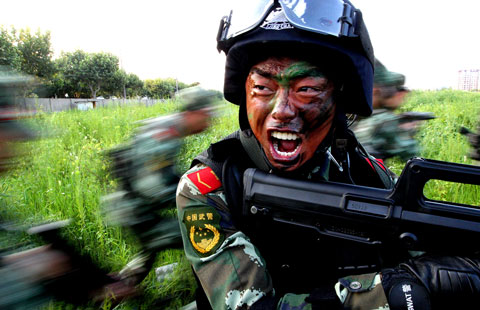
CHANGCHUN - Wartime documents have revealed evidence of Japanese biological warfare crimes and atrocities committed by Japanese Unit 731 during World War II.
The Japanese documents released on Friday by Jilin Provincial Archives regarding "biological warfare" show in detail Japanese troops' activities in building "bacteria forces" in its colonial regions and using human beings for experiments to develop biological weapons.
The documents are dated from 1936 to 1945 and include 81 rolls of more than 400 pieces of paper and over 70 audio-visual archives.
According to a report of a Japanese military police on August 9, 1937, the document stipulated the code name of "biological warfare" as "biological prevention" or "plague prevention." Since then all "biological warfare" matters were referred to by the Japanese military using the code name.
"It explains why so few Japanese biological warfare materials could be found in public documentation," said Gao Wei, leader of the research team at the provincial archives.
Another 77 rolls of documents recorded that 372 people were sent to Japanese Unit 731, a covert biological and chemical warfare research and development team, for "Special Transfer." The people were from China, the then Soviet Union and Korea.
"Special Transfer" means sending prisoners who no longer had any use to the "bacteria forces" for experimentation to develop biological weapons, said Gao.
The documents also recorded an order by the Japanese Kwantung Army to catch rats. The Japanese army gave more than 20,000 rat-traps to citizens and asked them to catch 450,000 rats. The army rewarded those who caught the most number of rats.
The documents said that Ishii Shiro, who was in charge of biological warfare, had attended "plague prevention" meetings on several occasions.
Gao argued that the rat catching was carried out to develop plague.
"We have found that once the Japanese troops occupied a region, they would send a bacteria army there," Gao said. "Documents prove that biological warfare was the Japanese forces' major invasion strategy."
According to the archives, Japanese "bacteria forces" including Unit 731 started biological warfare in more than 20 provinces and cities of China on 161 occasions, claiming more than 270,000 lives and causing more than 2.37 million people to be infected by plague.








